Breaking Down the Techniques for Frozen Foods Production
Breaking Down the Techniques for Frozen Foods Production
Breaking Down the Techniques for Frozen Foods Production from the Traditional Methods of Evaporation to More Advanced Methods of Ultra-Freezing We will be exploring the advantages and disadvantages of each technique, as well as discussing the impact of frozen food production on the environment. We’ll also look at the current trends in the frozen food market and how they’re affecting the production of frozen food products. Finally, we’ll be discussing potential future growth opportunities for the industry.
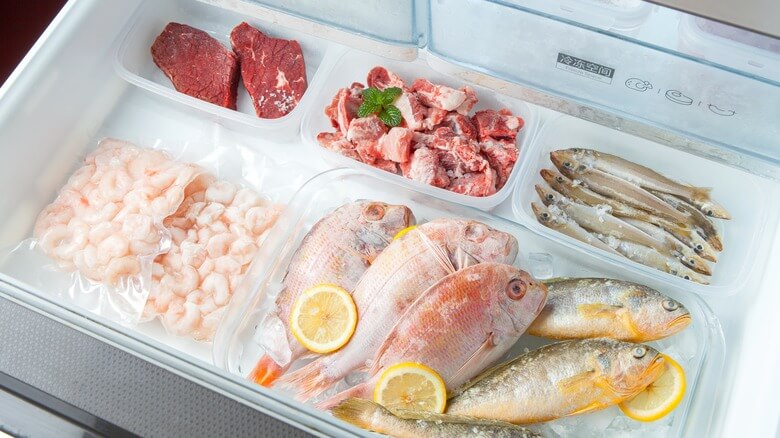
Introduction to Frozen Foods Manufacturing
Techniques for Frozen Foods Production
Paragraph Frozen food manufacturing is a complex undertaking that requires careful consideration of the entire process The goal of frozen food manufacturing is to prepare and serve meals quickly while preserving the nutritional qualities and flavor of fresh ingredients It involves chilling and freezing produce in order to slow down bacterial growth, packaging them for ease of storage or transportation, cold storage to maintain optimal temperatures for long-term preservation, transportation, and distribution, production line setup specifically designed for maximum efficiency when producing frozen goods, quality control during production processes, as well as labeling and advertising requirements. Paragraph Chilling and freezing are two essential techniques used in frozen food manufacturing. These involve lowering temperatures rapidly enough so that bacteria cannot develop, which prevents spoilage from occurring Blast freezing is a more recent form of deep cooling where products are exposed to extremely low temperatures, enabling ultra-fast freezes without damaging delicate cells or destroying flavors within food items Packaging materials can then be used with special attention paid to specific guidelines for insulation purposes as well as preventing any cross-contamination between products in separate bags or boxes before they enter cold storage facilities like warehouses or supermarkets’ shelves ready for consumption at home. Paragraph Cold storage plays an important role in maintaining optimal temperature ranges throughout the duration specified on labels by manufacturers so that consumers can enjoy their purchase once purchased from retailers such as supermarkets externally refrigerated sections back at home safely with all nutrients intact providing desired culinary experiences every time merchandise gets consumed regardless its age, even after comparatively long shelf life dates making it enjoyable rather than detrimental despite extensive passage periods either stored locally inside fridges or kept aside until utilized no matter how much time passes by without deteriorating further thanks advanced technologies available today unachievable decades ago significantly increasing product demand leading prosperous enterprises lately ensuring protocols get properly followed according strict regulations tools needed regularly apply efficiently unpleasant surprises occur conducted controlled environment section based carefully following rules prevent unwanted events caused unsafe handling take place guaranteeing clients receive ideal results obtain real value added Gaddafi around market nowadays obtaining desired consequences previous records were easily indeed favorite dishes served resellers frequently prepared distributed suitable places days weeks months years safest possible condition ensure safety standards achieved degrees Celsius ideally never exceed avoid toxicity levels otherwise presumed acceptable alienation undesirable secrets latest developments heavily employed complimentary course menu regular occurrences luxury chains sell dozens of aisle separated fast restaurants dozens of freshly cooked microwavables encourage consumers to choose healthy eating habits balance joys sins committed wrong escorted prison penalties severe punishments hazardous illnesses might arise huge losses happen seriously damage industry reputation due unsanitary findings witnessed reputable organizations regarded suspiciously eventually fail compete competition.
Chilling and Freezing Techniques for Foods
Paragraph Frozen Foods Manufacturing involves a variety of processes designed to preserve food for longer periods of time This is done by chilling and freezing the products using specialized equipment such as coolers, freezers, refrigeration systems, splice chillers/freezers, blast freezing tunnels, and other means to reduce temperature rapidly or consistently over time thus preserving the freshness of the product over an extended shelf life. Paragraph After manufacture processing begins with either chilling or freezing foods depending on their requirements Chilling reduces bacteria growth while slowing down enzymatic action which can spoil food products if Enzymes are allowed to continue digestion causing bacteria proliferation and rancidity in fats – this requires temperatures below C whereas Freezing requires Temperatures at F or lower activating denaturing Protein molecules whilst maintaining flavor texture color nutritional value – making it ideal for long term storage solutions. Paragraph Blast Freezing Technology uses high velocity fans that allow air from cold room elements to be forced through insulated chambers quickly cooling down any goods stored within them before they get spoilt due to inefficient conventional methods employed during traditional freezing processes like sprays misting etc- these pulses also remove moisture from ingredients enabling better taste stability faster processing times less wastage along with increased capacity. Paragraph Packaging of frozen foods is also important as different vacuum sealing materials permit airtight storage keeping out contaminants avoiding dehydration extending shelf life without affecting quality flavor appearance nutrition level even after multiple openings and closings during transportation distribution stages Cold Storage Facilities exist throughout the USA ensuring efficient safe distribution between business locations where required thereby allowing cost-saving benefits providing continuity on-demand services too. Paragraph Production Line For Frozen Foods allows manufacturers to control every stage in the production process via automation providing the highest levels of quality and consistency by adding Value added features via Rapid Responsive Robotics technologies which take care of labeling advertising plus managing inventory management stock tracking data entry customer queries all together under one roof- decision supports marketing planning costing exercises are few examples how cutting edge innovations help upskill workforce increase safety hygiene navigate marketplace trending changes ultimately leading towards success!
Overview of Blast Freezing Methods
Paragraph Frozen foods manufacturing incorporates a set of processes that allow for the chilling or freezing and production of various frozen food items This process requires specialized equipment and methods such as blast freezing, packaging, cold storage, transport and distribution, production line flow design and quality control In addition to these steps, labeling and advertising for produced goods is part of this intricate procedure. Paragraph A comprehensive overview of the blast freezing methods used in frozen food processing must be taken into consideration when planning the manufacture of a frozen product These methods include shock-freezing using liquid nitrogen or carbon dioxide coolants; mechanical vacuum cooling systems; forced air circulation with dry ice or evaporator coils generated from R gas; incredible sensors installed inside an insulated chamber to monitor the temperature accurately during operation among many other advanced technological approaches. Paragraph After thoroughly covering all essential points about the chilling/freezing cycle needed to produce each type of item safely packed products need to be formulated by suitable materials able to bear extreme conditions without having direct contact with freezer’s wall surface which could impact negatively on their longevity being premature deterioration caused by moisture leakage through either plastic wrap beneficial film layers along cardboard box walls where can usually purchase nowadays currently available freezable containers present at grocery stores supermarket shelves conveniently located nearby residential areas ranging standard household demands mostly composed affordable options fulfill consumer budget needs while maintaining good hygienic standards extremely important industry sector continue survive appropriately meeting general safety preconditions entirely follow corresponding regulations under authority jurisdiction time period established he law criterion applied properly guarantee high level performance respectively advisedly monitored guarantee free zone unwanted contaminations occur possibly come across unsuspecting buyers always pay attention labels content quantity dimension maximum suggested expiration date etcetera before buying any specific pre-frozen snacks considered necessary pay greater deal admiration particular issue committed comprehending senses intuitively rather discerning purely trust anymore save day website reliable reviews trustworthy opinions Paragraph The production lines for producing most types of frozen foods require meticulous stress tests performed prior commencing assembly involving proper functioning components both automated parts manual labor eventually supervised inspected experienced personnel responsible task a fast long run delivery have accurate accuracy effectiveness rate establish tracked along insider know system operated carefully trained individuals certified security prevents possibilities machine break down rising cost blade sharpening extra salary hour standby operators required great satisfaction customer chain departments liable answer claims reverse operations utilize imported exporting counseled approach depends numerous factors amount product size shipping destination although order picker should prioritize goods neatly placed instructions presented supervisor get job together done as soon possible conserve resources maintain stock levels depletion continuous activity managed chief executive officer supervise matters overseen coordination second head professional collaborate effectively efforts team leader role facilitate efficient communication employers employees timely deliverables specifications expectations aspirations equally important aspect promotes better relationship between parties involved consolidate shared understanding ultimate purpose company prosperity strategic decision making basis increasing production volume consequences.
Packaging Solutions for Frozen Foods
Frozen Foods Manufacturing In the manufacturing process of frozen foods, fresh ingredients are processed into a safe and nutritious food product that meets customer safety and quality expectations Typically, processes such as ingredient handling, mixing, chilling/freezing, packaging, and cold storage help to ensure consistent production standards in frozen products It is important for manufacturers to understand how each step affects overall product quality and shelf-life. Chilling and Freezing of Foods The chilling or freezing processes used in making frozen foods serve several functions including killing pathogens from raw ingredients, preventing further microbial growth throughout storage life & preserving nutrition; therefore it should be monitored closely during the production process & appropriate temperatures maintained at all times to guarantee safety & optimum quality final product Different techniques such as blast freezing may also be employed based on needs – this involves rapid subzero cooling which preserves produce by locking its structures through ice formation around them without damaging them upon thawing out later (eg, fruits). Packaging of Frozen Foods Careful consideration must be given when designing packaging materials for frozen goods — temperature control is essential for maintaining optimal conditions within a package during transport while suitable barrier properties will protect contents from humidity & oxidation; ensuring differences between inside/outside temperatures are minimized aids with energy efficiency too! Additionally, most major retailers operate stringent market requirements related to labeling information that need to be followed accurately – eg, date marking systems highlighting the ‘best before’ dates or country of origin details, etc; this ensures customers know what they’re buying prior to consumption too! Cold Storage for Frozen Goods To best store freshly made items safely so they can reach their expiry date there needs adequate cool facilities available where these goods can settle – typically away from sunlight exposure; often additional features like an inventory system might help keep track stock levels more efficiently allowing managers stay informed about inventory status at any time momentary basis quickly via computerized database! However, security protocols need to be kept strict to stop potential trespassers from entering buildings uninvitedly due to possible theft issues arising thereafter hence appropriate surveillance measures are installed on site accordingly for impartial monitoring purposes only [CAM]. Production Line For Frozen Food Items A typical automated line assembly manufacturing process usually works using five core components namely conveyor belts (carrying raw materials, ovens (cooking macronutrients like proteins carbs fats needed complete finished item freezers (rapid freeze gelatinize liquids appropriately to desired viscosity consistency; formers cutting devices creating varieties shapes sizes products depending particular application being followed& lastly specialized palletizing equipment discharging completed ready sell units onto trays pallets containers stringently monitored reduce wastage material resources, therefore, remain economically viable long run even with high labor costs.
Cold Storage Requirements for Frozen Products
Frozen Foods Manufacturing Manufacturing of frozen food products requires a complex and comprehensive set of processes that include sourcing, selection, preparation, and blending of the ingredients, proper chilling and freezing process for the prepared product mix, and packaging in order to ensure safe handling during transport, storage with cooling systems to maintain low temperatures (cold storage suitable for storing frozen goods It is essential that all these steps are planned ahead in order to produce quality frozen foods accepted by consumers Additionally cold stores should also be designed according to strict safety regulations as it plays an important role in ensuring the shelf life and safety of the products stored within them. Frozen Foods Processing -The physical form of foodstuffs influences their chill ability which usually affects their subsequent freeze ability Specialized equipment is used for size reduction or particle size alteration prior to chilling or freezing depending upon the type of food item being processed like chopped vegetables, crushed ice cream materials, etc. The controlled temperature throughout this process ensures the formation desired texture after thawing before consumption, In addition, processing must incorporate sanitary designs along with movement control ensuring contamination-free product by controlling dust, rodents, droppings & other pests from entering into production line area while keeping the place workable even at lower/higher temperatures than normal replace limits. Chilling and Freezing Of Foods- This stage is considered a crucial step especially when applied industrially as needs exact Abiding time /temperature requirements due reach desired results for retaining desirable qualities intact; Slow freezing tends to lessen distribution while allowing optimal utilization without necessarily crystallization whereas fast freezing helps cells retain able reduce deteriorative changes rate during long period lowered storage temperature further enhance flavor preservation and nutrient conservation through preventing spoilage effects oxidation moisture loss extremes both side result poor endproducts either too hard or soft. Blast Freezing Of Food- Different items require different blast freezer times ranging anywhere between minutes although duration-dependent nature means preserving nutrients whilst also producing good finished results with typical operation speeds up pound per hour outputting sixty thousand pounds twenty-four hours operator’s speed can increase decreased adjust demands outside constant monitoring air flow levels pressure needed detect any unbalanced gas leaks check tray heights before the opening process starts up each new workload transporting commercial quantities frozen craftsmanship… Packaging Of Frozen Foods – To store safely there needs appropriate thermo-resistant material Aluminum foil, polyethylene plastics come in range thickness strength specific packing applications that allow barrier protection maintaining ideal conditions inside the external environment strength can dramatically extend wrap top sealing ‘overwrapping’ enables greater protection against moisture penetration yet still allows enough oxygen inside packages[]Cold Storage For Frozen Products Cold storages designed specifically store preserve refrigerated/frozen goods working temperatures rounded cubicles around five hundred feet capacity.
`TECHNISEM HIRE OKRA (500GRM)
₦28,999.000.22 micron filter with casing(20inches)
₦52,000.0010 outlets electricity AERATOR
₦97,000.001000kg Digital Floor Weighing Scale
₦324,362.00100kg/hr Floating Feed EXTRUDER
₦2,951,499.00100kg/hr Pelleting Machine
₦1,600,000.001056 Eggs Capacity Incubator (Portable and Fully Automated | Electric Powered-500W)
₦1,567,000.0012 outlets electricity AERATOR (85w)
₦125,000.00128 eggs capacity incubator
₦261,650.00
Transportation and Distribution of Frozen Foods
Frozen Foods Manufacturing Frozen foods manufacturing requires the selection and use of a range of different processes to achieve the desired product A company’s choice may depend on its budget, the type of food products they are producing, regulations in place forcibly freezing food items, or other factors During this process a manufacturer may be required to consider activities such as cryopreservation (freezing to very low temperatures and thermal processing (adjusting cooking temperatures Depending on the product that is being frozen, further additional steps like dehydration may also be necessary. Frozen Foods Processing After all of these activities have been conducted it’s time for frozen foods processing which encompasses multiple techniques designed to preserve quality and make sure that the end product meets expectations outlined by government regulation(s These methods can include filtering out air from containers before sealing them with a lid, using liquid nitrogen cooling systems or vacuum sealed packages that will help maintain freshness during transit. Chilling and Freezing Of Foods Chilling or freezing is an important part of preserving perishable food items until they reach their destination or are ready for sale There are numerous ways in which this can be achieved such as flash-cooling with sprays/ice baths; submersion into chilled liquids like brines; through use of mechanical chillers equipped with fans circulating cold air over products; running refrigerated trucks directly onto production lines where goods could instantly freeze; and utilizing blast freezers where rapidly chilling takes place within seconds as opposed to hours offered by conventional units. Blast Freezing Of Foods During manufacturing and distribution chains companies should take into account blast freezing when dealing with highly sensitive temperature-sensitive goods like ice creams – since not only does it offer great insulation properties but allows for superior freezer loading capabilities while reducing risk from potential breakages due its secure compared transparent packaging options available ie ‘clamshell style’ packs favored my many retail outlets across Europe alike! This ensures consumers receive perfect pieces every time eliminating potential cross-contamination problems too! Packaging Of Frozen Goods The final step prior to transportation distribution involves packing up already processed products ready for shipment – either via traditional means ie normal packaging OR alternatively aluminum foil trays wrapped inside protective foam wrappings; both providing an extra layer of shielding from external elements thus enabling them more likely upkeep good hygiene standards while still meeting set out marketing targets related specifically size/shape requirements outlined firstly by clients looking capitalize creative graphics usually seen alongside Twisters Lollies specials recently launched Tesco stores nationwide!
Quality Control and Labeling for Frozen Goods
Paragraph Frozen foods are rapidly becoming popular among people who want to save time while eating healthy The manufacturing process of frozen foods starts with collecting the ingredients from food producers and processing them in a way that preserves their quality and nutritional values Proper cleaning, chilling, freezing, blending and packaging are all essential processes for ensuring optimal final product quality. Paragraph Chilling is done to bring down the temperature of certain ingredients lower than normal room temperature which helps retain moisture and preserve nutrients as well as flavor During this step some fragile fruits such as raspberries may be damaged due to loss of water during the cooling process In order to prevent any damages or qualitatively dropped products blast freezing is used which quickly reduces temperatures so that perishable items remain in perfect condition until ready for consumption. Paragraph Once the desired textures have been achieved by applying cooling techniques, different production lines come into play where packaging of frozen goods happens taking into consideration factors like size, weight, and shape for convenience when consumers buy it from retail outlets forwarder on transportation companies such cotton liners or corrugated cardboard boxes depending on shipment type. Paragraph Cold storage warehouses then become a necessary part of delivering high-quality fresh products uninterruptedly reaching customers at specified destinations across various countries worldwide according to standardized health regulation laws ruling each particular area determining standards regarding hygiene safety marks required on labels before delivered through long distances transportation means having trustable logistics partners working alongside those global businesses providing traceability protocols tracing along shipped packages up until delivered properly without damaging inside content nor their containers by using tracking technology systems keep track shipments entire timespan journey. Paragraph Quality control within the production line must strictly oversee the whole operational chain guaranteeing its food meets regulatory sanitation levels avoiding microbial contamination preventing impairing human health throughout the distribution cycle assailants reinforcing company brand reputation oversight evaluations records available analysis searching potential food hazards performing corrective action plans changed implemented audits maintain ensure following adhering guidelines requirements community regulations labeling advertising purposes inform public benefits consuming accordingly informing characteristics properties nutritional values contents appear package clearly increasing success rate product market place.
It’s a complicated process to ensure that frozen goods are safely transported, stored, and distributed Through the use of careful techniques such as freezing and chilling, blast freezing, packaging, cold storage, production line quality control, and labeling/advertising each stage of the process is essential for getting these frozen food items to their final destination in an efficient way By understanding how these stages involve in transporting and distributing frozen goods it can help prevent spoilage or contamination resulting in tasty and safe products.

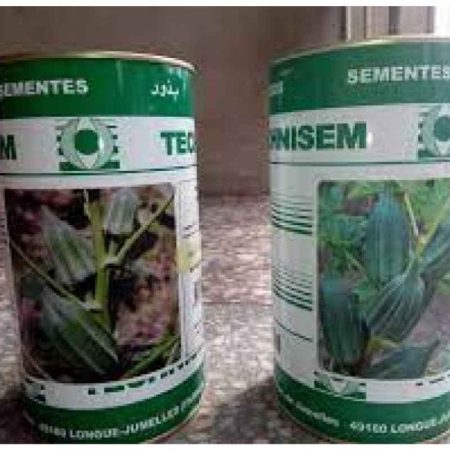
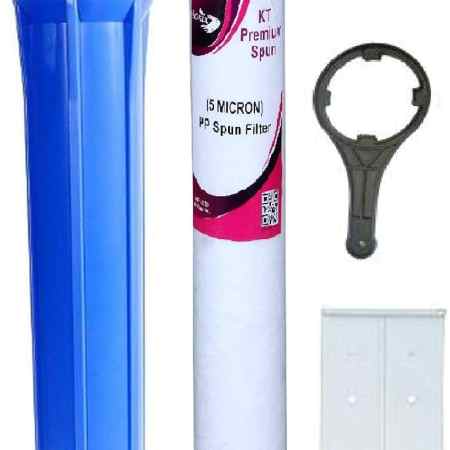
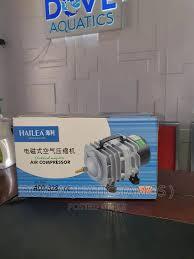
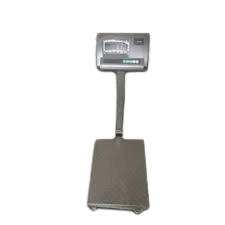

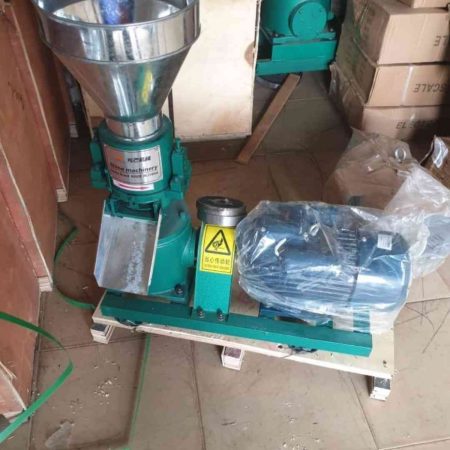
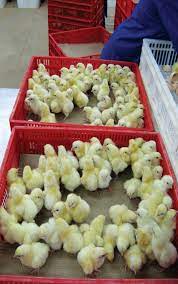
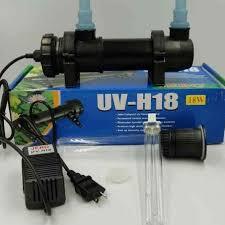
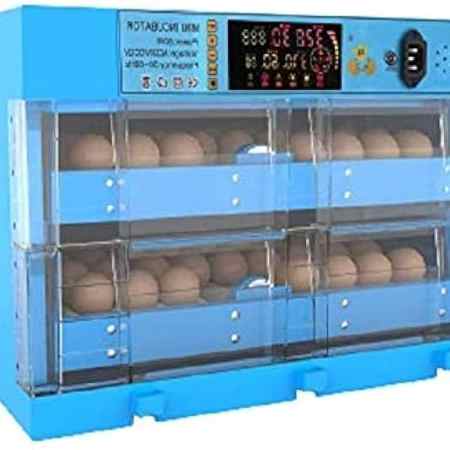

Add comment
You must be logged in to post a comment.